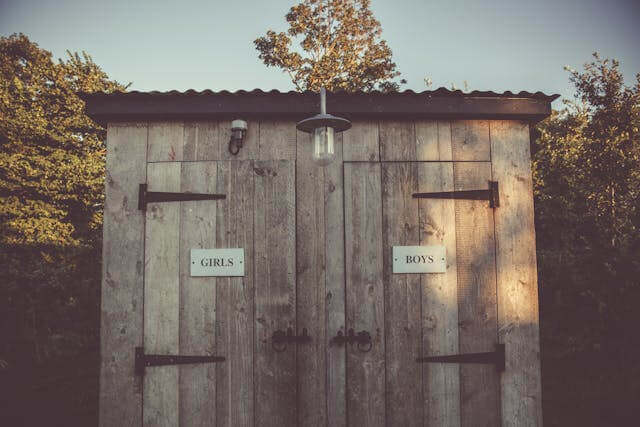Greywater systems capture wastewater from showers, sinks, and laundry for reuse in irrigation or toilet flushing. Two people in tiny houses generate 40-80 gallons greywater daily — adequate for irrigating gardens, lawns, or perennial plantings. Simple systems cost $300-$1,000 DIY; advanced treatment costs $1,500-$3,000 installed.
Simple Branched Drain Systems
- •Branched drains split greywater among multiple distribution points using gravity flow.
- •No pumps, filters, or storage — water flows directly from fixtures to landscape.
- •Install 1-2 inch pipes with 2% slope (1/4 inch drop per foot) leading from showers and sinks to mulch basins around trees, shrubs, or gardens.
- •Three-way diverter valves send water to irrigation or sewer/septic during storms or when not needed.
Mulch basins distribute water below wood chip or straw mulch hiding pipes and preventing soil erosion. Place basins 18-24 inches from plant stems preventing root damage. Size basins for daily flow: 0.1-0.2 square feet per gallon daily flow, so 50 gallons daily needs 5-10 square feet basin area per distribution point.
- •Branched systems cost $300-$800 including pipes, valves, fittings, and mulch.
- •Installation requires basic plumbing skills and 1-2 days work.
- •Advantages: simple, reliable, zero operating costs, no permits required in many jurisdictions (under 250 gallons daily).
- •Limitations: suitable only for subsurface irrigation, requires adequate yard space, distributes unfiltered greywater (use biodegradable soaps).
Greywater Wetland Treatment
Constructed wetlands treat greywater through biological filtration using plants and microbes. Systems include settling tank removing solids (100-200 gallon), wetland bed with gravel substrate and water-loving plants (50-100 square feet), and distribution to irrigation or discharge. Wetlands handle greywater contaminants through filtration, bacterial breakdown, and plant nutrient uptake.
Installation costs $1,000-$2,500 for excavation, liner, gravel, plants, and piping. Advantages include high treatment quality, aesthetic landscaping feature, educational value, and minimal maintenance. Limitations include requiring adequate space (100+ square feet), proper design preventing odors and mosquitos, and seasonal die-back in cold climates reducing winter treatment.
Filtered Greywater Reuse Systems
Multi-stage filtration treats greywater for reuse in toilet flushing, laundry, or expanded irrigation. Systems pump greywater through filters removing hair, lint, and particles, then disinfect via chlorine or UV before distribution. Storage tanks buffer supply-demand timing differences.
Commercial systems like Hydraloop ($4,000-$6,000) and ReWater ($2,500-$4,000) integrate filtration, disinfection, and controls in compact appliances. These suit permanent installations where filtered reuse justifies costs. DIY systems cost $800-$2,000 using separate filter housings, UV sterilizers, and control components.
Advantages include maximum water conservation (50-70% household water recycled), safe toilet flushing reuse, and year-round functionality. Limitations include high costs, electricity consumption (50-200 watts for pumps/UV), filter maintenance ($150-$300 annually), and permitting requirements in some jurisdictions.
Greywater System Maintenance
Quarterly inspect distribution pipes for clogs, check valve operation, verify mulch basins drain properly, and observe plant health (yellowing suggests excessive nutrients or salts). Annually: flush pipes with fresh water, refresh mulch in basins, prune encroaching roots. For filtered systems: replace filters per manufacturer schedules (monthly sediment, 6-12 months carbon), clean UV lamp sleeves, test disinfection efficacy.
Use greywater-compatible products: biodegradable soaps without boron, avoid bleach and antibacterial chemicals, minimize grease and food particles, and consider human safety — greywater isn't potable and shouldn't contact vegetables eaten raw.
